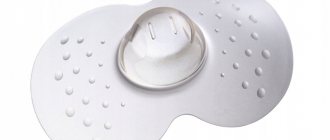How to wean your baby at night
According to the World Health Organization, lactation is recommended to continue until the child is two years old. The ideal option is to self-wean, but this does not always happen. A child at this age has a conscious understanding of his mother’s breast; for energetic and excitable babies, the breast is a source of calm.
The worst problem for a mother is weaning from evening and night feeding, because the child does not fall asleep without this habit. The sucking reflex requires a lot of strength and energy.
- The mother must create other conditions for the child, gradually eliminating breastfeeding. For example, you can read a fairy tale before bed, rock, sing a lullaby, offer kefir, turn off the lights and turn on soothing classical music. Two hours before bedtime, you can conquer your child with porridge.
- A warm bath with herbs before bed will relax you if your baby is not prone to allergic reactions. The baby should sleep separately from his mother - in his own crib.
- Mom can wait until the milk enters the involution phase (2-3 years) - it becomes smaller, the structure is similar to colostrum, and the breasts decrease in size. The baby loses sucking interest from the “empty” breast and it will be easier to complete lactation.
After three years, independent weaning occurs. You cannot wean your child abruptly; everything is done gradually. If, using different methods, the child has become capricious, night sleep is disturbed, it is worth postponing weaning.
When to wean?
The process of breastfeeding can drag on for years.
According to WHO, the recommended age for breastfeeding is 2 years. After all, after a year of life, the child develops immunity, and milk contributes to its better development.
Christina, 25 years old: “I think that the optimal age for stopping breastfeeding is somewhere around 1.5 years. My daughter had already started kindergarten at this age, so I decided. We managed it quite easily."
Of course, the ideal time to stop breastfeeding is when the baby refuses his treat on his own, but few mothers wait until this time.
Statistics say that in recent years only 50% of women are breastfeeding, and the majority feed for up to 1 year. Only a few retain this invaluable product in the second year.
Read the article about the benefits of breast milk for the proper development of a small child.
Useful advice from a pediatrician on how to use a breast pump to express breast milk.
Recommendations from an educational psychologist will help you figure out how to teach your child to use a bottle.
Features of weaning a 2 year old child
There are three ways to wean a two-year-old child off breastfeeding: separation, medication, and a planned, gentle procedure. The safest way to end is the soft way. This cannot be done when the baby is sick, unwell, whining, out of mood, during the period of vaccination or teething.
We recommend reading: Sage to stop lactation: how to take it, how to brew it, Komarovsky’s advice
Nutrition plays an important role in “milk disappearance.” For example, an infusion of lingonberry leaves, jasmine, mint, spices, and seasonings reduces lactation. Food should be moderately warm, because hot food enhances lactation.
If a woman drinks less fluid, milk production will decrease. Gradually you need to reduce the number of feedings, distracting the baby.
Active sports, moderate physical activity, and running will remove excess water. Mommy will quickly get in shape and also lose excess weight after giving birth.
Expressing milk is prohibited, because massaging and stimulating the nipple allows the milk to come in.
Lactastasis is added to this period - the breasts begin to harden and hurt. A woman should examine the mammary glands and feel them with her hands - if there is redness of the areola, an increase in temperature or the formation of lumps, she should consult a doctor. These are the first signs of mastitis.
A “pill” against human milk or how to quickly wean a child off the breast?
If it is difficult for you to endure for a long time and prepare for gradual weaning, but you want to quickly discourage this habit from your baby, then on the modern market there are medications to suppress lactation in the shortest possible time.
A prominent representative of this group is the drug Dostinex.
Its action is based on reducing the production of the hormone prolactin, which is responsible for milk production. The drug has a selective effect and does not affect other hormones.
Its disadvantage is side effects, which occur in 70% of cases. These are rapid heartbeat, headaches, nausea, vomiting, deterioration in general well-being, and apathy.
This drug is taken ½ tablet at an interval of 12 hours for two days. Courses are used only for the treatment of disorders associated with excessive production of prolactin.
Elena, 25 years old: “I learned how to stop breastfeeding with the help of Dostinex from my gynecologist. 2 months after giving birth I needed to go back to work. One tablet solved my lactation issues. True, there was a very strong headache and weakness throughout the body, but it went away in just a couple of days. The milk has disappeared."
Another drug in this series is Bromocriptine. It also reduces the secretion of prolactin and suppresses physiological lactation. Unlike Dostinex, it must be taken in a course. Has more pronounced side effects.
If we compare these drugs from a price position, then Bromocriptine is two times cheaper than Dostinex.
The Natural Way to Wean Gradually, Gently and Without Stress
It is important to remain calm at the end of the lactation period for mother and child. All actions should be slow, gradually accustoming the child to growing up. It is necessary to increase the time between feedings, remove one of the evening or daytime feedings. The result will be the cessation of breastfeeding, no matter what method the mother resorts to.
Reducing daily applications
You can do an experiment. To do this, tell the child one day that he will eat milk only before and after bedtime, gradually reducing the number of feedings. The baby should see that his mother is busy. Gradually, breastfeeding is replaced by adult food and snacks.
It is recommended to wean in cool weather, starting with giving up one application. The child needs to be distracted, for example, to go outside, go on a visit, play, or go to the park. It is advisable to involve relatives in this matter. During the first three days, you need to observe changes in behavior. The first stage of weaning from one feeding is easily tolerated; on the fourth day, two feedings are skipped. Thus, the number of daily feedings is reduced to zero.
Nipples and bottles are removed and replaced with a cup and sippy cup. There should be no sucking reflex; over time, the child will get used to it and forget about this process.
Physical contact is also important - hugging and squeezing the baby more often. You cannot show your breasts or change clothes - the child must forget about its existence.
We recommend reading: Until what age should you feed your baby breast milk?
Daytime sleep without breasts
The child needs to be taught to fall asleep during the day or evening without his habit. You can offer your child a portion of porridge, cookies or yogurt in advance. Feeling full will make things a little easier. Mom should devote more time to the baby, hug him, read fairy tales or sing songs.
You can also go to the kitchen for a while, saying that there are urgent matters. The baby will fall asleep on its own, but such a move to another room should only last for a few minutes.
After sleep, children cry or are capricious. In order to defuse the situation and distract the baby, you can go to the window with him, look at the weather, traffic or birds. Mom should have an afternoon snack ready, and when the baby calms down, it’s enough to sit him down at the table for a meal. The process will be easier when the infant falls asleep on the street. Mom’s actions should be soft and calm.
How to eliminate evening feedings
To prevent the baby from demanding his mother’s breast, you can offer him a bottle of formula or compote. It is best for dad to do this, because mom is associated with the breast. You can hug your baby, rock him, kiss him. Relaxing baths or a walk in the fresh air also work well.
Reducing lactation with gradual weaning, drugs and other methods
If a woman who is tired of breastfeeding finds it difficult to tolerate the weaning of her baby and wants to finish everything as quickly as possible, you can purchase special drugs to suppress lactation. For example, Dostinex tablets reduce the body's production of the hormone prolactin, which is responsible for lactation. The general hormonal background does not change. Among the disadvantages are side effects: tachycardia, arrhythmia, nausea, vomiting, stool and digestive disorders. The medication dosage interval is 12 hours. The dosage is indicated in the instructions for use, but it is better to consult a pediatrician to avoid negative consequences.
Another drug reduces the amount of prolactin - Bromocriptine. It is necessary to take a course; there are side effects and contraindications.
We recommend reading: How to quickly and without tears wean your child off night feeding?
How do you know when your baby is ready to wean?
Babies are rarely weaned suddenly and without warning. Typically, the weaning process is slow and gradual, even for babies who are weaned earlier than usual due to separation from the mother and the use of pacifiers and bottles. If a child suddenly rejects the breast, then this is most likely a refusal of the breast due to negative body conditions, uncomfortable feeding positions or stress.
There are a number of signs by which you can determine that your baby will soon be ready to wean.
The baby takes the breast less and less often. As children grow older, they will play more, explore the world around them, walk, talk, eat a variety of foods, and breastfeed less and less. Finally, the baby will breastfeed once a day, eventually once every few days or several times a month.
The baby loses interest in breast milk. Babies under one year old may lose interest in breastfeeding if they replace the pleasure of suckling with sucking on a pacifier or their own fingers. These babies will soon be ready to wean, but their emotional needs for suckling will remain for some time (sometimes for many years).
Komarovsky's technique
There is another method of separating mother and baby. A nursing woman can leave home for a while or send her baby to grandma for a week. Not a very pleasant way to wean. The little one is sent to live with her grandmother for a few days. This is a lot of stress for him, although it is an effective method. The baby is deprived of natural nutrition, does not see his mother and shows resentment.
Dr. Komarovsky advises not to aggravate the situation, not to bring the baby to a stressful state by separating him from his mother. Bottle feeding is prohibited. A woman can drink less liquid of any kind. A healthy lifestyle and physical activity reduce the production of the hormone.
Correctly weaning a child from breastfeeding is not difficult, the main thing is to find an individual approach. For example, you can buy your child a new album and markers, plasticine, and construction sets. By being distracted, the baby will forget about his habit for a while.
Stopping breastfeeding is a natural process that is quick and painless for some, but painfully difficult for others.
How to wean your baby off breastfeeding
So, how can we make weaning as painless as possible for mom and baby? There are several general rules by adhering to which you can do this in the most gentle way:
- start replacing daytime feedings with regular meals, it’s better to start with those feedings that are easier for the child to refuse - usually these are meals in the first half of the day or immediately after a nap, and only after the child gets used to not being breastfed during the day, you can proceed to replacing morning, evening and night feedings;
- stop randomly putting the baby to the breast to calm, distract, occupy, etc., find a replacement breast for all such cases;
- distract the baby from the breast with a bottle of milk, water, compote, etc.;
- if you are sure that the child is not hungry at night, instead of the usual feeding, you can hug and stroke the baby, provided that the breast did not satisfy hunger, but served as a habitual reassurance - this will calm the child;
- switch the baby's attention if he shows interest in the breast, especially if the feedings were on demand and not on a schedule, and the baby is used to having the opportunity to latch on at any time. You can distract with new games, places, books, etc., the mother will better determine what can distract and captivate the baby;
- be close to your child all the time - play with him, walk, read, and without breastfeeding he should feel his mother’s love, her warmth, attention and participation;
- increase tactile contact with the child - hug him more, hold him in your arms, kiss him, squeeze him, etc.;
- change the ritual and environment of feeding - the fewer associations the child has with breastfeeding, the better;
- do not provoke the child - do not expose your breasts, do not remind him about feedings again, do not take the position in which you usually feed the child, etc.;
- The ideal solution for the period of breastfeeding would be to participate in the ritual of putting one of the family members to bed - for example, dad or grandmother. The baby will fall asleep faster and more calmly without smelling the milk;
- if there is no one to replace the mother when putting her to bed, then weaning off breastfeeding should be done gradually; experts advise leaving for half a minute at first, gradually increasing the time of absence (if the baby is already big, then you should definitely voice the reason for the absence - turn off the light in the hallway, take out the laundry from the washing machine, stir the soup, etc.), the child must be sure that mom will be back soon;
- replace morning feeding with porridge - not immediately, but gradually the baby will get used to being given porridge in the morning instead of breastfeeding;
- after the baby begins to calmly accept morning porridge instead of breastfeeding, you can begin to eliminate evening feeding - feed the child porridge before bedtime, when falling asleep you can offer him a bottle of milk;
- try to breastfeed at night not immediately, as before, but after offering the baby a bottle of water;
- when replacing breastfeeding with formula feeding from a bottle, you should gradually increase its amount;
- You need to negotiate with a child over two years old and explain your actions to him.
Photo source: Photo by Tanja Heffner on Unsplash
The older the child, the more difficult it will be to replace breastfeeding - he is already old enough to formalize his protest in both word and deed. Try to come to an agreement, but try not to scare the baby with scary “babykas” and other miraculous creatures that have taken the milk. The less the child remembers about “titya” during the day, the better, so the advice that there is no need to provoke the baby with deep necklines or lack of clothing is very relevant here.
What not to do
According to a renowned pediatrician, weaning can cause psychological harm. Hysterics, whims, suitable for feeding time, throwing things around are normal phenomena at the end of feeding.
- It is strictly forbidden to lubricate the breasts with burning substances (green paint, mustard). This is dangerous for mother and baby. Tying the breasts with an elastic bandage or thick fabric can provoke congestion in the mammary glands without affecting the amount of milk.
- Breast milk protects the baby with maternal antibodies and immunoglobulin it contains. If the family has planned a summer vacation at the dacha or the sea, excommunication should be postponed until returning home.
- Active teething is stressful for a small organism; this period should not be aggravated.
Each child is individual and there is no exact time to stop breastfeeding. If a baby can calmly fall asleep without a breast, he is psychologically ready to be without milk.
How to properly end pumping
At this stage, you need to express milk only with your hands. If you use a breast pump, milk will continue to come out at the same rate, as it is too similar to the sensation of feeding a baby. It is important to finish pumping gradually, especially if you have been doing it consistently.
- Use your hands to compress your breasts and express milk to stop pain in the area caused by the pressure of the milk. To avoid stimulating its production, do this very carefully.
- Do not express all the milk, but only most of it to feel relief.
- First, day by day, reduce the number of pumping sessions, bringing it to two with 12 hours between them.
- At this point, reduce the time of each pumping session.
- Then do only one pumping per day, shortening the duration.
- If you reach a point where you can only express a few tablespoons of milk, you can stop pumping completely.
- Warm showers encourage pumping, but if taken consistently, they can have the opposite effect and encourage more milk to be produced.
What to feed your baby after finishing breastfeeding? This issue is resolved individually after consultation with a pediatrician and monitoring the child’s behavior. Breastfeeding can be used to replace one or more feedings during the period of completion of breastfeeding.
How to feed a mother who is finishing feeding:
Immediately after finishing feeding, you should not include all prohibited foods in your diet, including sweets, alcohol and fatty foods. The fact is that this process is accompanied by physiological changes - hormonal changes, which are stress for the body. Additionally, you still need to replenish the micro- and macronutrients lost during breastfeeding.
How long will the restructuring period last?
Doctors believe that the body takes 2 to 6 months to return to its normal rhythm. All this time, if possible, you should adhere to approximately the same recommendations regarding nutrition and lifestyle as during breastfeeding. The first sign that your body is returning to its previous rhythm will be a restored menstrual cycle. It is also worth taking general tests and consulting with a gynecologist to confirm this information.
What diet should mom follow:
It is worth remembering that both unhealthy food and drinks and radical diets for weight loss are equally contraindicated for you. Both are additional stress for the body. Continue to eat the healthiest foods possible, supplement your diet with healthy baby food, and drink plenty of fluids: unsweetened compotes, still water, and fresh juices.











